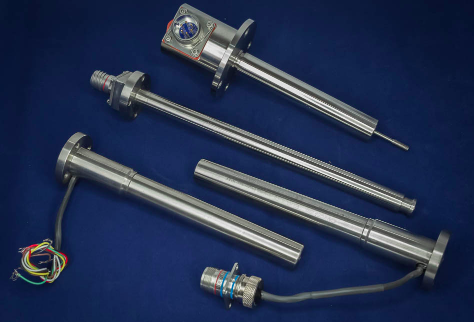The Difference Between an LVDT and an RVDT
When it comes to custom electromechanical sensing and actuation for the industrial and aerospace market, you want assurance that you will receive a quality electromechanical transducer. No company can afford to have failures that affect position sensors; that’s why sourcing your products from a manufacturer with ISO 9001:2015, AS9100 Rev D certified processes, and ANAB accreditations will give you peace of mind.
What is an LVDT?
LVDT stands for a Linear Variable Displacement Transducer and works under the principle of mutual induction, and displacement. Simplistically it means non-electrical energy is converted into electrical energy. How the energy gets converted provides an extremely reliable solution for a precise linear displacement (position) and gauging measurement.
An LVDT sensor is a type of electrical transformer that can be used wherever a physical displacement or position needs to be converted into an electrical signal for indication or control purposes.
These LVDT’s are widely used in many applications, including power generation, nuclear turbines, gas and steam turbines, hydraulics, fly-by-wire flight controls, engine controls, thrust vector controls along with many other commercial and military aerospace applications. Essentially LVDTs are required where high reliability and harsh environmental applications prevail.
Characteristics of LVDT
An LVDT converts displacements into a variable electrical current, voltage, electrical signals, along with the reverse. LVDT’s have an infinite lifecycle when used as they are virtually frictionless. They don’t contain any electronics and are designed to operate at cryogenic temperatures of up to 1200 °F (650 °C). The key characteristic is their ability to perform under high vibration and shock levels, particularly when used in harsh environments.
The LVDT consists of three solenoidal coils. The primary core is wound on the tube then two secondary coils are layer wound on top of the primary on the tube. As the core moves, it links to two secondary coils causing the induced voltages to change. These coils are connected in such a way that the output voltage is the differential between the two secondary voltages. Because the sliding core doesn’t touch the inside of the tube, it moves without friction, making the LVDT a highly reliable device. The absence of sliding or rotating contacts allows it to be completely sealed against the environment.
The Difference Between an LVDT and an RVDT

The RVDT, which stands for Rotary Variable Differential Transducer, is also a rotary variable differential transformer that operates in the same manner as the LVDT; however, the exception is the rotary ferromagnetic core. Instead of sensing a linear motion as in the LVDT, the application of RVDT are that it uses a rotary variable differential that senses angular movement.
The linear range of measurement for an LVDT is approximately plus or minus 40 degrees, whereas the RVDT is utilized to measure angular displacement. LVDT changes the linear motion into an alternating electrical signal, whereas the RVDT changes the angular displacement into an electrical signal.
Application of RVDT
RVDTs are durable and robust for repeatable position sensing mechanisms, useful for numerous applications requiring a sensor that can withstand extreme conditions such as vibration and shock.
RVDTs are used in space vehicles, cargo aircraft, military fighters, drones, experimental aircraft, missiles, nuclear reactors, flight simulators, and high-speed railways. Typical applications also include rotary actuators, valve positioning, and throttle level positioning.
RVDT Advantages and Disadvantages
The benefit of using an RVDT over other types of position sensors is that they are robust, durable, cost-effective to produce, compact, and easy to manage. Like the LVDT, RVDTs are commonly used sensors because they are contactless; therefore, they don’t suffer from functional integrity resulting from friction wear and tear.
RVDTs have a reputation for reliability and are the preferred sensor in manufacturing heavy-duty equipment within the aerospace, oil, and gas industries.
The disadvantages of RVDT is if the application requires high-precision sensors, which will increase the cost. Although RVDTs are robust and work in harsh environments, they aren’t suitable for environments subject to extreme temperature changes or where high vibrations are expected.
If there isn’t a power source available, they may not be the best choice as an RVDT requires an AC input to produce the required output voltage reading. However, the right manufacturer considers these factors when designing a position sensor for a client’s specific application.
Key Takeaways:
- LVDT, Linear Variable Displacement Transducer, works with mutual induction and displacement
- RVDT, Rotary Variable Differential Transducer, uses a rotary variable differential that senses angular movement in the ferromagnetic core
- LVDT sensors are ideal for use in extreme situations, where heat, vibration, and other external elements are a factor
In the world of position sensing solutions for a range of applications, the manufacturer must offer reliability, performance, a long life, and service excellence. Sentech is a global leader in designing and manufacturing position sensors, including LVDTs, RVDT’s, FASTAR sensors, HYDRASTAR sensors, signal conditioners, and solenoids. We specialize in developing custom, tailored solutions for mission-critical applications such as power generation, industrial, and aerospace environments. Contact us today for a free consultation as we are confident that with 30 years in the industry, we will find a solution for your specific needs.


